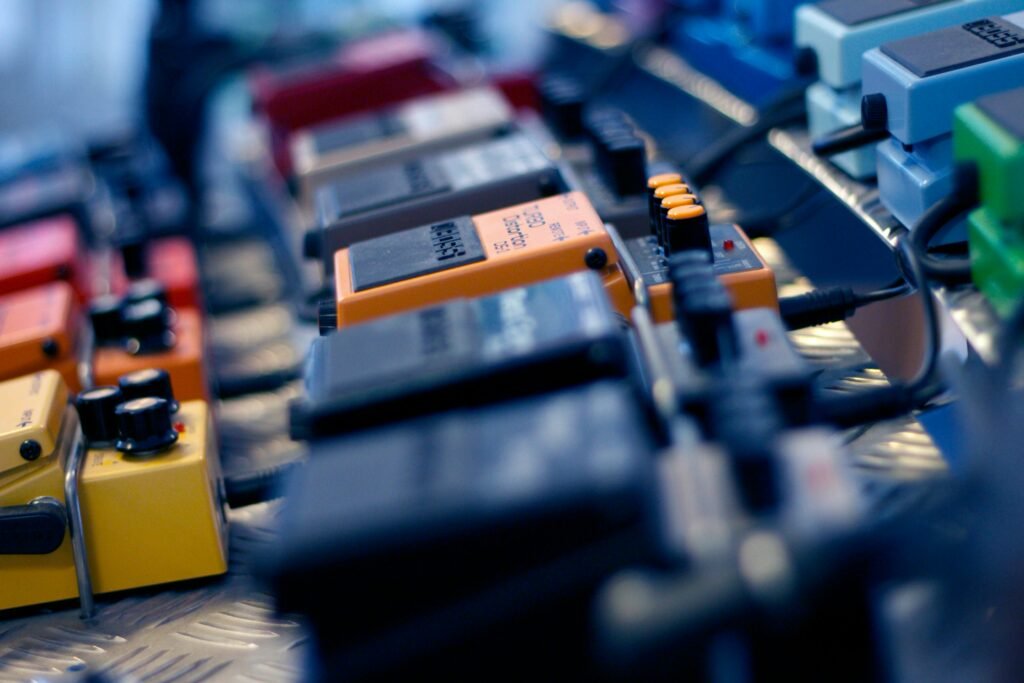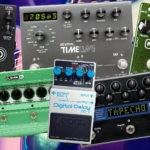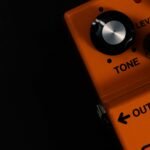Guitar pedals, also known as effects pedals, have played a pivotal role in shaping the sound of electric guitars, enabling musicians to explore a vast array of tonal possibilities. From the early days of rock and roll to modern experimental music, guitar pedals have evolved significantly. Here’s a look at the fascinating history of these essential tools.
The Early Days: Echo and Tremolo
The story of guitar pedals begins in the 1950s, a time when guitarists started seeking new ways to enhance their sound. One of the earliest effects was the tape echo, made famous by units like the Meazzi Echomatic and the Binson Echorec. These devices used magnetic tape to create echo effects, which became a hallmark of surf rock and early rock and roll.
Tremolo, an effect that modulates the volume of the signal, was another early innovation. It was built directly into amplifiers like the Fender Vibroverb. While not a pedal, it paved the way for future standalone effects units.
The Birth of the Fuzz Pedal
The 1960s saw the birth of the fuzz pedal, which became synonymous with the era’s groundbreaking music. The first commercially available fuzz pedal was the Maestro Fuzz-Tone FZ-1, released in 1962. It gained massive popularity after being used by Keith Richards on The Rolling Stones’ hit “(I Can’t Get No) Satisfaction.”
Following the Fuzz-Tone, other notable fuzz pedals like the Dallas Arbiter Fuzz Face, famously used by Jimi Hendrix, and the Electro-Harmonix Big Muff Pi became staples of the fuzz sound, each with its unique tonal characteristics.
The Rise of Overdrive and Distortion
As rock music grew louder and more aggressive, guitarists needed new ways to push their amplifiers. This need led to the creation of overdrive and distortion pedals in the late 1960s and early 1970s. The Ibanez Tube Screamer and the Pro Co RAT are classic examples that defined these sounds. The Tube Screamer emulated the warm, natural overdrive of a tube amp, while the RAT offered a more aggressive, high-gain distortion.
Modulation and Time-Based Effects
The 1970s and 1980s introduced a wave of modulation and time-based effects that expanded the sonic palette available to guitarists. Phaser and flanger pedals like the Electro-Harmonix Electric Mistress and the MXR Phase 90 added swirling, jet-like sounds to the guitar tone. Chorus pedals, such as the Boss CE-1 Chorus Ensemble, created rich, shimmering effects that became popular in new wave and pop music.
Delays also became more accessible with the advent of analog delay pedals like the Boss DM-2. These units used bucket-brigade devices (BBD) to create echo effects without the need for tape.
The Digital Revolution
The 1980s and 1990s saw the rise of digital technology, which revolutionized guitar effects. Digital delays, reverbs, and multi-effects units became common, offering unprecedented flexibility and sound quality. The Eventide H910 Harmonizer and the Line 6 DL4 Delay Modeler are notable examples of how digital processing expanded the capabilities of guitar pedals.
Modern Innovations
Today, guitar pedals continue to evolve, incorporating advanced digital technology and boutique analog designs. Companies like Strymon, EarthQuaker Devices, and Electro-Harmonix push the boundaries of what pedals can do, offering everything from pristine digital reverbs to complex multi-effects units that integrate seamlessly with digital audio workstations (DAWs).
Pedals such as the Strymon BigSky and the EarthQuaker Devices Avalanche Run exemplify the marriage of high-quality analog circuitry with cutting-edge digital processing, providing guitarists with endless creative possibilities.
Conclusion
The history of guitar pedals is a testament to the ever-evolving quest for new sounds and sonic exploration. From the early days of tape echo and tremolo to the sophisticated digital effects of today, guitar pedals have played a crucial role in shaping the sound of modern music. Whether you’re a purist who loves vintage fuzz or a tech enthusiast who enjoys the latest multi-effects processors, the world of guitar pedals offers something for every guitarist.









